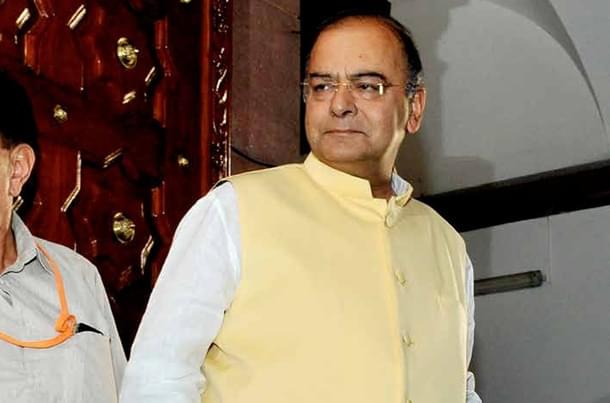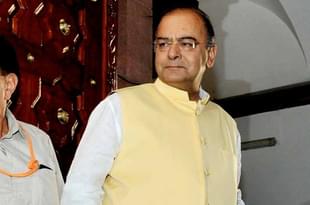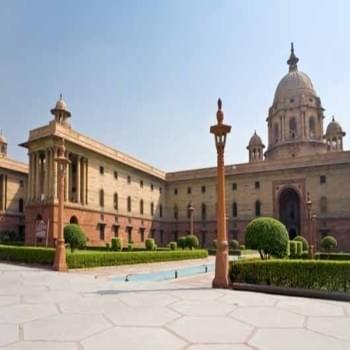Magazine
The Budget Track Record
Rajeswari Sengupta
Feb 11, 2016, 09:44 PM | Updated 05:46 PM IST
Save & read from anywhere!
Bookmark stories for easy access on any device or the Swarajya app.


In the months leading up to the 2014 election, the BJP made all the right promises. It won the election with a majority in the Lok Sabha—the first majority government in 30 years. With this win came hope and optimism that the government would unveil a gameplan to initiate structural changes in the economy. Has that hope been belied?
The Union Budget is a document that describes how much revenue the government expects to earn from what sources, and how much it plans to spend in what categories. Over time, it has become a statement of the work plan of the government for the coming year. It has become a document that spells out the economic vision of the government.
The Narendra Modi-led government has so far presented two Union Budgets. The government was expected to lay out a strategy to solve the pressing problems of the economy and deliver on the promises of growth revival and job creation made on the campaign trail. The Budgets announced by the government in July 2014 and February 2015 had some good elements but, by and large, did not live up to expectations. In recent times, the economic performance has been sluggish. An overall sense of despondency has replaced the initial exuberance that prevailed when the government took over in 2014. Expectations are high for the February 2016 Budget. There are gaps created by the last two Budgets that need to be addressed and a new strategy adopted to turn around the economy.
A downturn began in the Indian economy in 2012. GDP growth fell to a seven-year low of 5.3 per cent. Inflation was stubbornly high at 7 per cent, creating a situation of stagflation. Investment demand was sluggish, and the scope for increasing government expenditure was limited by the fiscal deficit of 5.9 per cent. It was against this background that the new government took charge in May 2014. In the months leading up to the election, the Bharatiya Janata Party made all the right promises. It won the election with a majority in the Lok Sabha—the first majority government in 30 years. With this win, came hope and optimism that the government would unveil a gameplan to initiate structural changes in the economy.
July 2014 presented the new government with an opportunity to deliver a Budget that would reshape the economy, the way the P. V. Narasimha Rao-led minority Congress government had done in 1991. That government, elected in June 1991, had even less time to prepare for the interim Budget that Manmohan Singh presented on July 24, 1991. The situation back then was also direr. In comparison, the interim Budget of 2014 announced many small measures but did not spell out an economic vision of the government.
The government announced initiatives such as the development of 100 Smart Cities, a national-level Skill India programme, the Digital India programme, and the Swachh Bharat Abhiyan project. Arun Jaitley’s Budget speech mentioned the keenness of the government to revive growth, restore vibrancy in the economy, boost the manufacturing and infrastructure sectors, promote financial stability and introduce fiscal prudence. These are all good aspirations but what is needed is a long-term strategy to achieve these goals. There needs to be a deeper diagnosis of the problems in the economy, and addressing the underlying institutional bottlenecks by amending laws and constructing State capacity.
The good elements of the Budget were the increase in foreign direct investment (FDI) cap in the defence and insurance sectors to 49 per cent from 25 per cent, aimed at improving the investment climate and the announcement that a monetary policy framework would be put into place. The latter initiative is important because, for decades, India lacked a framework to deliver low and stable inflation.
On the fiscal front, there should have been a detailed roadmap to roll out the Goods and Services Tax (GST). For long in India, poorly designed and executed tax policy and tax administration have resulted in a low tax-to-GDP ratio and have been inimical to growth. With a 35 percent tax rate on corporate income, India has one of the highest tax rates among similar countries. What was needed in the Budget was a strategy to reform the tax policy and the tax administration. Overall, the 2014 interim Budget left much to be desired.
The 2015 Budget was the first full year Budget to be presented by the new government. The fall in global crude oil prices meant that the government was in a position to utilize the resultant windfall to cut back on subsidies. The government should be given credit for accepting the recommendations of the 14th Finance Commission to increase the share of the states in the central taxes to 42 percent. This meant that going forward, the states would be responsible for their own expenditures. This provided the government with an opportunity to bring about fundamental changes in the machinery of central expenditures. All of these could have been used to facilitate fiscal consolidation.
The previous Finance Minister, P. Chidambaram, had committed to a certain fiscal adjustment path. The 2015 Budget, however, announced the extension of the timeline to achieve the fiscal deficit target of 3 percent by one more year to 2017-18. This was unfortunate. The government could have instead announced systematic disinvestment measures to free up resources for capital expenditures and public investments while remaining on the committed trajectory of fiscal consolidation.
While subsidies on petroleum products were cut back in 2014-15, there was a lot more room to reduce expenses by pruning subsidies. The primary focus of the Budget should have been to boost GDP growth and achieve primary surplus so as to bring down the debt-to-GDP ratio. The budgeted primary surplus instead was -0.7 per cent and non-interest expenditures were budgeted to go up only by 4.06 per cent.
There was no plan in the 2015 Budget to implement tax reforms. The Direct Taxes Code that seeks to consolidate all direct taxes and is designed to make the tax regime more stable was dropped from the Budget. This was a new low. It is one thing to remain silent on new initiatives. But it is worse when the government announces a work plan to not do reform.
In contrast, the financial sector reforms that were announced may be considered the redeeming features of the 2015 Budget. The announcements included merging the commodity futures with the Securities and Exchange Board of India (SEBI), setting up the statutory Public Debt Management Agency (PDMA), shifting the government bond market regulation from the Reserve Bank of India (RBI) to SEBI, shifting regulation-making power on equity flows related capital controls to the government, setting up the Gujarat International Finance Tec-city (GIFT), and formalizing inflation targeting as a monetary policy strategy through the signing of the Monetary Policy Framework Agreement (MPFA).
Another good element of the Budget was the announcement that a comprehensive Bankruptcy Code would be introduced in 2015-16 in order to facilitate efficient exit of failed firms. The 2015 Budget also mentioned that the Indian Financial Code (IFC)—the most comprehensive and game-changing piece of legislation on financial sector reforms in the history of the Indian economy — was going to be introduced “sooner rather than later”. All of these were steps in the right direction.
Looking back on the implementation, however, several of the announcements made in the 2015 Budget have either been shelved or implemented in a half-hearted manner or continue to be in limbo. The GST is still a far cry from becoming a reality. Discussions to introduce the IFC in Parliament seem to have lost momentum. Establishment of the PDMA and shifting of bond market regulation from the RBI to SEBI have both been rolled back.
One area of reform that has been discussed widely in policy circles in recent times is infrastructure reform. The Budgets of the BJP government did not unleash the wave of public investments in infrastructure needed to revive the economy. The overall outlay allocated to infrastructure projects in the 2015 Budget amounted to less than 0.4 per cent of GDP. The Finance Minister proposed reviving the public-private partnership (PPP) model of infrastructure development. To make this work, deeper institutional reforms are required to sustain private sector participation in infrastructure. This, in turn, needs amendment of laws, establishing well-performing regulators and building adequate State capacity to ensure high quality execution.
On corporate and individual insolvency reforms, the Bankruptcy Law Reforms Committee (BLRC) submitted its report and a draft bill proposing a comprehensive Insolvency and Bankruptcy Code (IBC) in November 2015. The bill was introduced in Parliament in December and was referred to a Joint Parliamentary Committee that is supposed to submit its report around the next Budget session.
Implementing big structural reforms should be a measured process that includes perfecting laws, and creating good institutions. Just as legislative delays exacerbated by political logjam can be damaging for the economy, rushing to pass a bill without perfecting it and without a full implementation plan can also hamper outcomes.

The business cycle downturn that began in 2012 has not ended. Economic performance continues to be bleak. For the 2016 Budget, the government needs a completely new strategy that involves thinking about the full picture, getting clarity on where we want to be by 2019, what is the vision for the economy as a whole, and what steps need to be adopted to achieve this goal.
India’s fiscal situation has worsened over the last few years. At present, the interest rate paid by the government is higher than the nominal growth rate which means that the debt to GDP ratio is now on an upward trajectory. One important component of the next Budget should be steps to achieve fiscal correction in order to restore fiscal stability and debt sustainability.
While increasing fiscal deficit at a time like this would not be prudent, a push for infrastructure reforms is needed. This calls for a strategy to boost public expenditure especially on infrastructure, by using revenues from public disinvestments and subsidy reductions.
There also needs to be a strategy for reforming the tax policy and the tax administration.
Even after taking into account the rollbacks post the 2015 Budget, by January 2016, it appears that a lot of the work in the financial sector has lost momentum. The next Budget should revitalise this process if the financing needs of the infrastructure sector are to be met. There also needs to be a roadmap to introduce the IFC in Parliament.
The economy today is experiencing a balance sheet crisis of the firms and the banks. The government should review the idea of opening up the economy to new private and foreign banks in order to relax the credit crunch that the real sector has been facing.
The need of the hour is big thinking on the scale of the 1991 Budget and bold ambition underlying a slew of policy initiatives. Budget 2016 needs to deliver on strong fiscal, financial and monetary institutions that are needed for India to emerge as a mature, market economy.
While it is relatively easy to enumerate a list of agenda items for the Budget, the announcements in the Budget speech are only a part of the overall strategy. This has to be followed up with a full implementation plan to turn the Budget speech into concrete actionable points that can be delivered over the next financial year. Short of that, merely a good Budget speech will be akin to engaging in “isomorphic mimicry” where the reform process gains legitimacy through announcement of policy initiatives without actually obtaining the desired outcomes.
Rajeswari Sengupta is assistant professor of economics at the Indira Gandhi Institute of Development Research.





